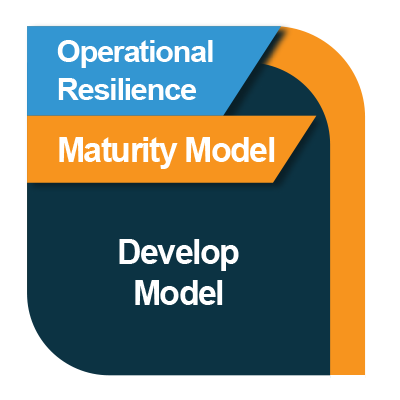Building Organisational Resilience: A Strategic Imperative for Crisis Management Professionals
Introduction
 In an era of increasing volatility, uncertainty, complexity, and ambiguity (VUCA), organisational resilience has become a critical capability for survival and sustained success.
In an era of increasing volatility, uncertainty, complexity, and ambiguity (VUCA), organisational resilience has become a critical capability for survival and sustained success.
 ISO 22316:2017 provides a structured framework for enhancing resilience by outlining key principles and attributes that enable organisations to anticipate, adapt, respond, and recover from disruptions.
ISO 22316:2017 provides a structured framework for enhancing resilience by outlining key principles and attributes that enable organisations to anticipate, adapt, respond, and recover from disruptions.
For crisis management professionals, understanding and implementing these attributes is essential to safeguarding business continuity, reputation, and stakeholder trust.
This article delves deeper into each attribute, offering practical insights on how organisations can strengthen their resilience strategies.
1. Shared Vision and Clarity of Purpose
Why It Matters:
A well-defined vision and purpose act as a compass during crises, ensuring that decisions align with long-term objectives rather than short-term reactions.
Key Actions for Crisis Managers:
- Strategic Communication: Ensure that the organisation’s mission, vision, and values are clearly articulated and understood at all levels.
- Alignment of Objectives: Regularly assess whether departmental and individual goals support the broader resilience strategy.
- Adaptive Strategy Reviews: Conduct scenario-based reviews to test whether the organisation’s purpose remains relevant under stress.
- Innovation Encouragement: Foster a culture where employees propose resilience-enhancing initiatives.
Example: During the COVID-19 pandemic, companies with a strong sense of purpose (e.g., shifting production to medical supplies) demonstrated greater adaptability and stakeholder trust.
2. Understanding and Influencing Context
Why It Matters:
Organisations do not operate in isolation—external threats (e.g., cyberattacks, regulatory changes) and internal weaknesses (e.g., supply chain dependencies) must be continuously monitored.
Key Actions for Crisis Managers:
- Environmental Scanning: Use PESTLE (Political, Economic, Social, Technological, Legal, Environmental) analysis to identify emerging risks.
- Stakeholder Collaboration: Build partnerships with government agencies, suppliers, and industry groups to enhance collective resilience.
- Competitor Benchmarking: Learn from how peer organisations manage disruptions.
Example: Financial institutions that closely monitor regulatory changes can adjust compliance strategies proactively, avoiding costly penalties.
3. Effective and Empowered Leadership
Why It Matters:
Resilient leadership ensures that organisations remain agile and decisive during crises.
Key Actions for Crisis Managers:
- Leadership Development: Train leaders in crisis decision-making, emotional intelligence, and adaptive thinking.
- Decentralised Decision-Making: Empower frontline employees to take action without bureaucratic delays.
- Post-Incident Reviews: Conduct structured debriefs after disruptions to capture lessons learned.
Example: During the 2010 Deepwater Horizon oil spill, BP’s initial centralised response worsened the crisis, whereas later delegation improved recovery efforts.
4. A Culture Supportive of Resilience
Why It Matters:
Culture shapes how employees respond to crises—whether with panic or proactive problem-solving.
Key Actions for Crisis Managers:
- Behavioural Expectations: Define and reward resilience-supporting behaviours (e.g., adaptability, accountability).
- Psychological Safety: Encourage employees to report risks without fear of blame.
- Stress Testing Culture: Use simulations to assess how teams react under pressure.
Example: NASA’s "safety-first" culture emphasises open reporting of near-misses, preventing major disasters.
5. Shared Information and Knowledge
Why It Matters:
Siloed information leads to poor crisis responses, whereas knowledge-sharing enables agility.
Key Actions for Crisis Managers:
- Centralised Knowledge Repositories: Create accessible databases for crisis protocols and past incident reports.
- Cross-Functional Drills: Simulate crises requiring interdepartmental coordination.
- Real-Time Communication Tools: Implement platforms for rapid information dissemination.
Example: Hospitals using shared electronic health records (EHRs) improved patient care coordination during COVID-19 surges.
6. Availability of Resources
Why It Matters:
Resource shortages (e.g., skilled personnel, financial reserves) can cripple crisis responses.
Key Actions for Crisis Managers:
- Redundancy Planning: Maintain backup suppliers, IT systems, and emergency funds.
- Skills Diversification: Cross-train employees to perform critical roles during staff shortages.
- Dynamic Resource Allocation: Use predictive analytics to anticipate resource needs.
Example: Toyota’s "just-in-time" supply chain struggled during the 2011 tsunami, whereas firms with diversified suppliers recovered faster.
7. Development and Coordination of Management Disciplines
Why It Matters:
Disconnected functions (e.g., risk management, HR, IT) create gaps in resilience.
Key Actions for Crisis Managers:
- Integrated Risk Frameworks: Align risk management with business continuity, cybersecurity, and compliance.
- Resilience KPIs: Measure and incentivise cross-functional collaboration.
- Flexible Structures: Adopt agile methodologies to adapt processes quickly.
Example: Companies with unified crisis management teams (e.g., integrating PR, legal, and operations) respond more cohesively.
8. Supporting Continual Improvement
Why It Matters:
Static resilience strategies become obsolete as threats evolve.
Key Actions for Crisis Managers:
- Benchmarking: Compare resilience performance against industry standards.
- Feedback Loops: Use employee and stakeholder input to refine strategies.
- Automated Monitoring: Deploy AI-driven tools to detect emerging risks.
Example: Airlines continuously update safety protocols based on black box data from near-misses.
9. Ability to Anticipate and Manage Change
Why It Matters:
Proactive organisations mitigate risks before they escalate.
Key Actions for Crisis Managers:
- Horizon Scanning: Identify weak signals of potential disruptions (e.g., geopolitical tensions, tech disruptions).
- Adaptive Governance: Design policies that allow swift strategic pivots.
- Stress Testing: Regularly simulate worst-case scenarios to assess preparedness.
Example: Cybersecurity firms using threat intelligence platforms preemptively block attacks before breaches occur.
Summing Up ...
Organisational resilience is not a one-time initiative but an ongoing strategic priority.
By embedding these nine attributes into governance, culture, and operations, crisis management professionals can build organisations that not only survive disruptions but emerge stronger.
Call to Action:
- Conduct a resilience gap analysis using ISO 22316 as a benchmark.
- Engage leadership in resilience-focused training and strategy reviews.
- Foster a culture where every employee contributes to organisational agility.
Mastering resilience today ensures competitiveness and sustainability tomorrow.







![[BL-OR] [3-4-5] View Schedule](https://blog.bcm-institute.org/hs-fs/hubfs/hub_generated/resized/e4287b59-1a43-4e10-8e43-c73b27b3ca39.png?width=172&height=50&name=e4287b59-1a43-4e10-8e43-c73b27b3ca39.png)
![[BL-OR] [3] FAQ OR-300](https://blog.bcm-institute.org/hs-fs/hubfs/hub_generated/resized/294e989f-8613-4bf3-96a5-a89408cfb9ca.png?width=150&height=150&name=294e989f-8613-4bf3-96a5-a89408cfb9ca.png)
![Email to Sales Team [BCM Institute]](https://blog.bcm-institute.org/hs-fs/hubfs/hub_generated/resized/850988ce-aa7d-4953-95cf-797635341edd.png?width=100&height=100&name=850988ce-aa7d-4953-95cf-797635341edd.png)




![[OR] Disclaimers and Usage of eBook](https://3893111.fs1.hubspotusercontent-na1.net/hubfs/3893111/Disclaimer%20and%20Proper%20Usage%20Morepost/IC_OR_Legal%20Disclaimer.png)
![[OR] [ISO] [C4] 22316:2017 Evaluating Resilience](https://3893111.fs1.hubspotusercontent-na1.net/hubfs/3893111/CM%20ISO22316%20Morepost/IC_CM_ISO22316_2017_Evaluating%20Resilience.png)
![[OR] [ISO] [C3] 22316:2017 Resilience Attributes](https://3893111.fs1.hubspotusercontent-na1.net/hubfs/3893111/CM%20ISO22316%20Morepost/IC_CM_ISO22316_2017_Resilience%20Attributes.png)
![[OR] [ISO] [C1] 22316:2017 Introduction](https://3893111.fs1.hubspotusercontent-na1.net/hubfs/3893111/CM%20ISO22316%20Morepost/IC_CM_ISO22316_2017_Introduction%2c%20Scope%2c%20Definitions.png)
![[OR] [ISO] [C2] 22316:2017 Key Principles and Attributes](https://3893111.fs1.hubspotusercontent-na1.net/hubfs/3893111/CM%20ISO22316%20Morepost/IC_CM_ISO22316_2017_Principles.png)
![[OR] [ISO] [C0] Organisational Resilience: A Guide Based on ISO 22316:2017](https://3893111.fs1.hubspotusercontent-na1.net/hubfs/3893111/CM%20ISO22316%20Morepost/IC_CM_ISO22316_2017_Table%20of%20Content.png)



